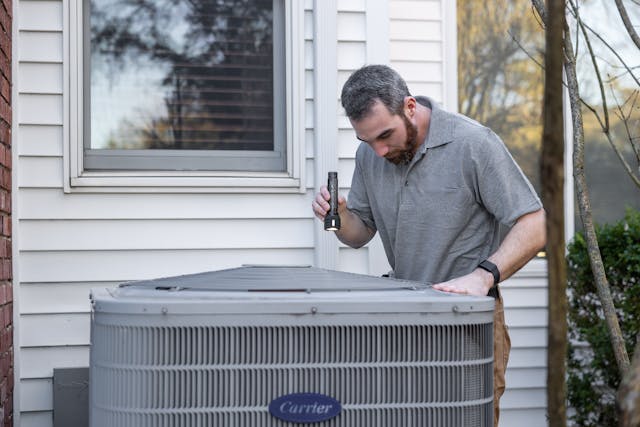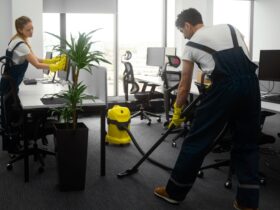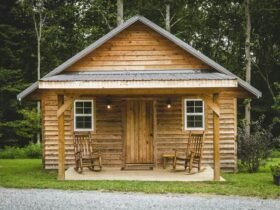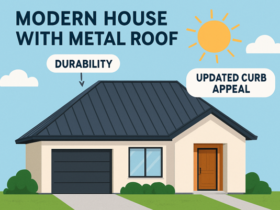Each season brings changes to how you use your home’s heating and cooling system. In a place like Gallatin, TN, where summers get hot and humid and winters can still dip into chilly nights, your HVAC system works year-round. It keeps your home cool in the summer, warm in the winter, and comfortable in between. But like any system that runs constantly, it needs regular attention to stay in good shape.
Skipping maintenance can lead to poor performance, higher energy bills, and unexpected breakdowns. Even small problems can grow if left alone. That’s why it’s helpful to create a seasonal checklist that keeps your HVAC system running the way it should.
Start With a Pre-Season System Check
The best time to inspect your HVAC system is before the season changes. That means checking it in early spring before the heat kicks in, and again in early fall before the cold settles in. A basic inspection helps spot small problems before they grow into major issues.
Begin by turning the system on and watching how it responds. Does it start right away? Are there any odd noises or slow responses? These are small signs that something could be off. You should also check your thermostat for accuracy and inspect visible components for wear or buildup.
In Gallatin, the switch from air conditioning to heating—or the other way around—can put pressure on your unit. If the system hasn’t been checked in a while, it may not perform the way you expect. This is common in homes with older equipment or ones that haven’t had routine service.
If you’re dealing with poor heating performance or an outdoor unit that’s struggling, it might be time to consider heat pump repair in Gallatin, TN, before the colder months set in. Heat pumps are popular in the area because they handle both heating and cooling. But like any part of your system, they can develop issues that slow down performance. Getting it checked now helps avoid breakdowns during colder days when you need heat the most.
Calling in a technician during the off-season also means faster scheduling and fewer delays. They can check refrigerant levels, inspect wiring, test airflow, and recommend repairs if needed. You won’t be left waiting when everyone else calls during the first cold snap.
Replace or Clean Filters Regularly
One of the simplest tasks you can do is change your air filter. It’s often overlooked, but it plays a major role in how your system runs. A clogged or dirty filter makes it harder for air to move through, which means the system has to work harder. That leads to higher bills and more wear on the parts.
Most homes need a new filter every 30 to 90 days. If you have pets, allergies, or a lot of dust, check more often. Keep a few spare filters on hand so you can swap them out without a trip to the store.
Clean Outdoor Units and Clear Surrounding Debris
Your outdoor HVAC unit plays a big role in how well the system runs. It needs good airflow to work correctly, and that can’t happen if it’s covered in dirt, leaves, or grass clippings. When debris builds up around the unit, it puts extra strain on the system and can shorten its life.
Each season, take a few minutes to check the area around your unit. Trim back bushes, clear any fallen branches, and brush off the top and sides. If the fins look dirty, use a garden hose on a gentle spray to rinse them. Don’t use high pressure—it can bend the fins and block airflow even more.
Leave at least two feet of space around the unit so air can move freely. That means no stacking tools, storage bins, or decorations near it. This small task can help your system run more smoothly throughout the season.
Check Vents, Registers, and Ducts
Good airflow doesn’t just start at the unit—it also depends on your vents and ducts. Blocked or dirty vents can make certain rooms feel stuffy or colder than others. Before each season, walk through your home and check that all vents and registers are clear.
Move furniture or rugs that might block air. Use a vacuum to clean dust buildup from the vent covers. You can even remove the covers to check for dirt deeper inside. If you notice thick dust, strange smells, or poor airflow in some rooms, there might be a problem in the ducts.
Over time, ducts can collect dirt or develop leaks. That means air escapes before it reaches your living space. If that happens, your system works harder and your energy use goes up. Consider calling a professional to check and clean the ducts every few years, depending on how much the system is used.
Test System Performance After Maintenance
Once you’ve done your seasonal tasks, it’s smart to test the system. Switch on the heating or cooling mode depending on the time of year. Give it a few minutes to run. Listen for anything unusual like buzzing, banging, or clicking. Pay attention to how long it takes to reach the right temperature.
Check the vents to see if air is flowing evenly throughout the house. Make note of any rooms that feel too hot, too cold, or unusually noisy. If the thermostat isn’t responding well or the system shuts off too soon, it could mean something isn’t working right.
This final test helps confirm that your efforts made a difference. If anything feels off, it’s better to get it checked now instead of waiting until the weather changes.
Caring for your HVAC system doesn’t have to be complicated. A few seasonal tasks can go a long way in keeping your system running well. In places where the weather shifts throughout the year, a routine checklist helps you stay ahead of sudden issues. Simple steps like checking filters, cleaning units, and watching performance can improve comfort and save money. By staying consistent each season, you make it easier to avoid surprise repairs and keep your home comfortable no matter the time of year.







